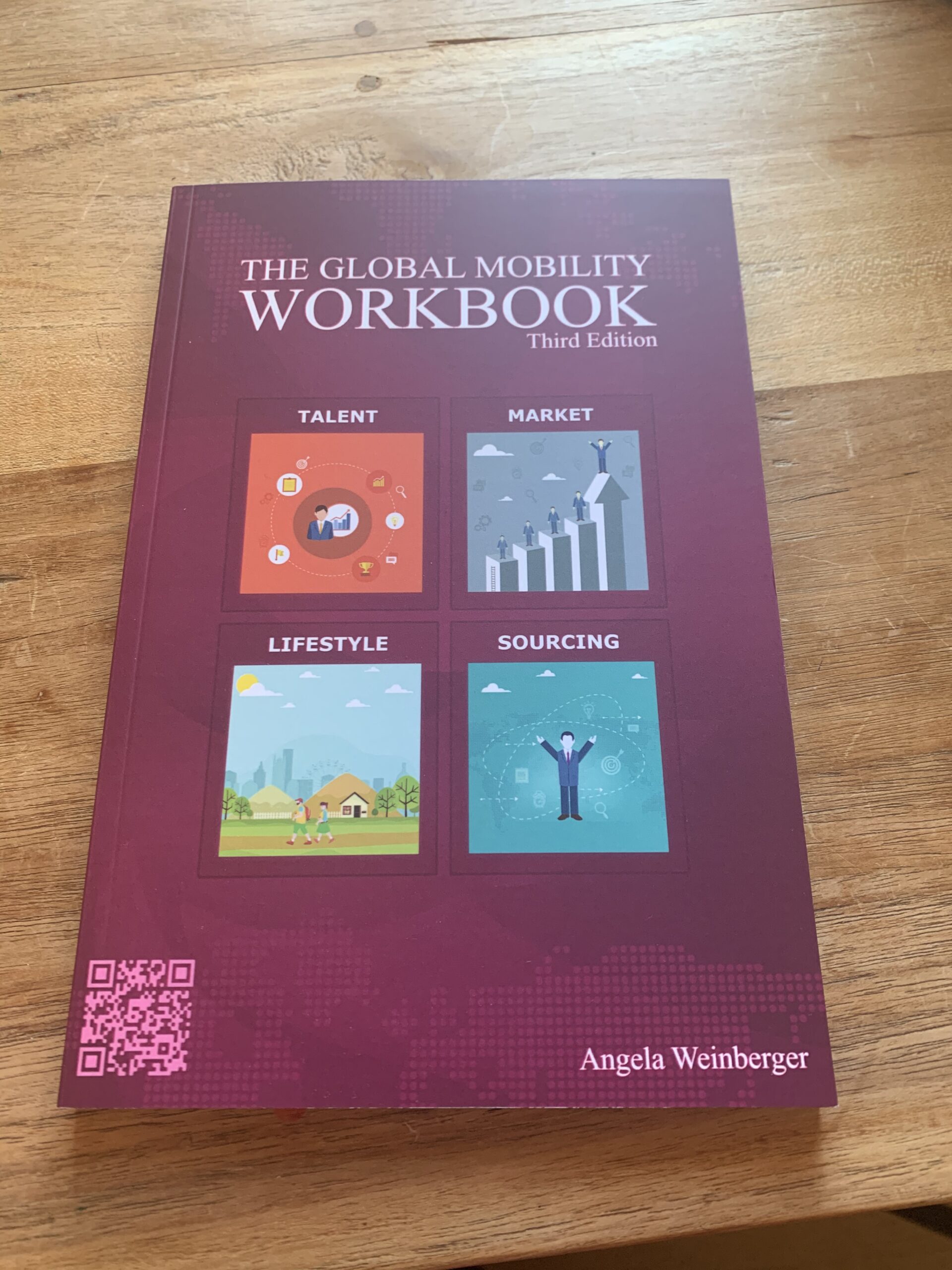Turn Problems into Solutions – Four Approaches to Solving Problems

“Experience is, for me, the highest authority. The touchstone of validity is my own experience. No other person’s ideas and none of my ideas are as authoritative as my experience. It is to experience that I must return again and again, to discover a closer approximation to truth as it is in the process of becoming me.” – Carl R. Rogers, On Becoming a Person, 1954
1 – Talk about “Problems” to Find a Solution
When I was a teenager, we had set meal times and would sit at a table together at least twice a day. Our Sunday family brunch often led to a conversation about a “problem.” My dad was studying to be a Carl Rogers client-centered therapist at the time, and I am not sure if he sometimes tried to use a questioning method or if he was just very skilled in giving my sister and me the space and safety in which we could just “let it out.” We never covered anything under the carpet, which is probably why I finally became a coach.
Having this kind of open environment where you can talk through anything is a family tradition that we still live with when we are together. Even though my dad and sister left this earth long ago, my mum, aunt, and I often sit down and talk through anything; we love to analyze why a person shows a particular behavior and how we can solve relationship issues. This is so normal for me that I sometimes need to remind myself that it is not “normal” but rather extraordinary, especially in German. I would assume other families have a more robust discussion around political topics, money issues (how to save it), or even more mundane topics like sports.
On the other hand, I have realized in conversations with friends that sharing problems and openly talking about feelings, insecurities, or areas of your life where you might not feel like “Wonder Woman” could be misinterpreted or come across as if you don’t know where you are going.
This is funny because I feel completely safe and on the right path in my life. I have a strong sense of alignment between my strengths and my life’s work. Insecurities of artistic types are normal because we expose ourselves to critiques much more often than the average business professional. Still, most companies also train people to use words other than “problem,” or we are not allowed to use words such as “drama.”
It took me years to weed out the “corporate speak” in my writing, and even a word like “alignment” creeps me out a bit as it feels “corporate”. Solving problems is one of my roots and hence I wanted to share four beliefs behind problems with you.

2 – Apply Time Pressure
When I think of problems, I think of my favorite math teacher (who also died rather young) and his gigantic triangle. He had the outer appearance of a garden dwarf but was a great math and physics teacher. He even made me like physics at some stage. In math, we had to solve problems constantly; sometimes, this would cause stress. I can’t remember this from school or university, but I wouldn’t say I like those psychometric tests, which are sometimes still used in banks and consulting firms to weed out candidates. The classical IQ tests focussing on calculations in your head can be stressful if you grew up using a calculator.
“Being bad with numbers” is a common stereotype of women and is often used against women. I’m concerned that women might usually not be “bad with numbers” but with the pressure of solving a mathematical problem without using Excel or a calculator and under time constraints. Considering this, every math problem will usually be solved with practice and a good teacher. And this is precisely what I mean by a “problem.” It’s a complex riddle that will need time, practice, and different angles to be solved. Do you like crossword puzzles? Could you imagine an upcoming “issue” or pickle to be approached like a crossword puzzle? Write down all the pieces, paint a picture, and see if a solution exists.

3 – Reduce the Complexity by breaking them down
Sometimes, solving problems alone is not possible. Problems might seem too complex to solve. You might have a machine in front of you and always follow the same steps and end up with the same error messages. For this problem, you need to Google or ask someone who understands the machine better than you do. It would be best if you tried several times and potentially several different approaches. You can write down what you did to solve the problem, ask a bot for help, or ask around in your network. Maybe someone else has encountered the same problem and has a solution or a workaround. I advise breaking the problem into smaller tasks or painting an image to understand the components and how they are interconnected. Are you confronted with a problem you cannot solve? Which steps have you taken and tried already? Would it be time to ask for help? If you aren’t getting help, should you escalate the issue to the next level now? What is at stake? Can you allow yourself a bit of discomfort?
4 – Challenge Your Self-Image
Having problems is often associated with shortcomings and harms our self-image of being a perfect “Wonder Woman.” However, this self-image also creates a lot of harm, especially when life isn’t perfect. For example, when I was in my thirties and forties, not being able to get pregnant nor holding my marriage together in two locations with two careers was a real problem. Until then, I lived in this illusion that we could PLAN our lives and that we had to take action. I might have exaggerated this a bit too much since I lost half of my family rather early in life. I probably thought, “Okay, I will just plan this better from now on.” (I love plans, spreadsheets, and to-do lists.)
Life isn’t like that, and during my coach training, I learned to accept that. I also learned that you cannot change others; you can only change yourself. Do you know who a “Wonder Woman” is? It’s a woman who loves herself anyway, despite the failure of her body to produce offspring, her failed marriage, and the stain on her top. Ask yourself if you could accept a little more each day and what it would take to “be yourself”? What does it mean for you? Maybe start with a small change, like wearing a different outfit or letting your hair down.
Often, a problem is a conflict of two or three interests that pulls them in different directions. It can also stem from opposing beliefs and constructs of reality. If we cannot solve a problem alone, we might feel dependent, and many of us don’t like to ask for help. It’s a common stereotype that men don’t want to ask for directions. However, I don’t like to ask for directions either. Sometimes, I have difficulty differentiating left and right, and asking how something is done best could show a weakness. Are you afraid to ask for help?
Problems are here to guide us.
Obstacles are learning opportunities,
Pain is beneficial.
Approach your day with a small problem you wish to solve, and add a weekly practice to your RockMeApp around solving problems. If you feel overwhelmed with a more significant problem and don’t know how to ask for help or who to turn to, maybe it’s time to talk to me.
Resources
The Global Mobility Academy

The Global Mobility Academy offers a high-quality standard, one-year program designed for Global Mobility Professionals. It is customizable to the client and geared towards a corporate Global Mobility function. The Global Mobility Academy fosters our mission to bring the Human Touch back into Global Mobility and to build a Global Guild of Professionals irrespective of their roles as vendors or in-house professionals.
This is a ten-day in-house talent development program to train your GM Team on the processes of Global Mobility. We also teach soft skills to become a better Global Mobility Specialist or Manager. The format, length, and content are adaptable to the client. Each training day consists of four modules that could also be delivered as 40 x 90-Minute sessions.

Module 1: Grasping “Global Mobility”
- Understand the History of Global Mobility
- Link megatrends to Global Mobility
- Understand the various definitions of Global Mobility
- Define how an international assignment is linked to career development
Module 2: Building up the Global Mobility Framework
- Understand the different framework components
- Explain how compensation approaches differ
- Be able to classify assignments beyond tax considerations
- Understand Global Mobility data and be able to explain in lay terms to expats
- Learn standard components of cost projections and how to plug in the data
Module 3: Initiating an Assignment
- Understand the difference between advising and managing an assignment
- Learn to develop a basic workflow checklist and work with it
- Go through a standard process for an LTA
- Understand the basics of immigration
- Communicate the Four C’s (Compliance, Cost, Care, and Career)
Module 4: Writing the Assignment Agreement
- Be able to draft an assignment agreement
- Be able to review assignment letter templates
- Understand how all legal components need to be clarified before drafting the agreement
- Gain insight into interdependencies of legal areas
- Go through a full assignment cycle from a Global Mobility perspective
Mid-Term Review with Leadership

Module 5: Enhancing the Expat Experience
- Go through a full assignment cycle from an Expat perspective
- Understand the selection and nomination of expats
- Name health and safety issues
- Develop metrics for success criteria
- Deal with emergencies
Module 6: Organizing the digital, global team
- Understand the impact of digitalization on how we work in Global Mobility
- Define Roles and Responsibilities in the processes
- Practice working with collaboration tools set up electronic assignment files
- Learn which tools make sense for which program size
- Recommend how to set up the Global Mobility Team
Module 7: Developing Your Global Competency
- Be able to recognize your gaps in global competency
- Understand basic intercultural dimensions and how they link to Global Mobility
- Understand the basics of intercultural communication and how to become more effective in Global Mobility
- Be able to develop an open attitude and basic etiquette and principles
Module 8: Collaborating with Vendors
- Be able to explain when a framework agreement is needed
- Conduct a vendor selection process based on good criteria
- Understand how all participants in the process need to share the same information
- Be able to define handover points to providers, lawyers, and specialists
- Create a value-based service delivery
Finalize career coaching goals and a learning plan End of Year Review with Leadership

Module 9 and 10: 2-day-Workshop “The Future of Global Mobility” Managing Global Mobility Projects
- Understand how to scope a project
- Develop deliverables in an agile environment
- Staying sane as a Global Mobility Manager
- Business Models for Teams or Barcamp
Coaching and Consulting Clients
- Learn more profound coaching and consulting techniques
- Be able to analyze real-life Global Mobility cases and consult peers on how to progress.
- Learn to build a deeper level of trust and handle difficult conversations
- Conduct a full expat and spouse briefing
At the end of the 2-day-Workshop
- Global Mobility Academy Certificates
- Global Competency Assessment
- Expatise Test (by request)
If you want to learn more about The Global Mobility Academy by Global People Transitions, please email angela@globalpeopletransitions.com or book a call via Calendly.
Why it is Hard to Measure Expat Performance

Measure Expat Performance
An expatriate (“expat”) is an individual living and working in a country other than their country of citizenship, often temporarily and for work reasons. They are usually sent abroad by a multinational employer (profit or non-profit). Managers often criticize expats who take up expensive international assignments for “underperforming” in their host locations. But nobody knows why that is. We don’t have data to prove this.
A study by Learnlight shows that four in ten international assignments are judged to be a failure. And yet the number of overseas assignments continues to rise. Global companies are under considerable pressure to determine what makes a successful overseas assignment and to understand why they so often fail. However, what has been so often overlooked is why it is difficult to measure expatriate performance. Since both assignment failure and success depends on how expats perform on the job, it becomes pertinent to consider how expats perform and why it is difficult to measure their performance. In the following points, I will highlight and elaborate on five reasons why it is difficult to measure expatriate performance.
- Goals for Expats are often not clearly defined. They are often conflicting as they have to take into account the interests of the home and host company, or headquarters and subsidiaries. It becomes difficult to work effectively when expats are trying to achieve the home company goals while simultaneously trying to fit in the expectations of the host company. More expats would perform well if the goals of the host company align with the objectives of the home company.
- Performance ratings have been calibrated for years. However, we know that there is an unconscious bias in the data. The first rater is usually a direct manager. This person potentially judges their own weaknesses less and thinks that the expat is responsible for failure alone. However, often the manager in the host country does not help the expat to solve dilemmas. The home country manager should consider it a responsibility to make it seamless for the expatriate to integrate well into the system. One of the biggest factors that determine whether or not an assignee would be successful is who his or her line manager is.
- Cultural concepts of performance are biased. Definitions of “high performance” have been largely influenced by Western values and did not take team performance into account. The gig economy will need stronger team collaboration and fewer individual players. Eastern values and approaches might have an advantage now.
- Management by Objectives is outdated. We need a new conceptual framework of performance. Even in the past setting annual targets was not always the best method of judging performance (irrespective of expat or local).
- Expat managers usually lack the informal network and access to the host culture so it is not surprising if their performance drops in Y1. It is quite impossible to know how to navigate in a terrain that you are not familiar with. Also, they are busy adjusting and have a family to integrate into the new life abroad. One might think that we can accelerate the cultural adjustment and then just go “back to the normal way of judging performance” but I would advise against such thinking. It takes time to fit into the system and culture of a new location. Hence, the whole process of cultural adjustment takes its tolls on expat performance.
Scullion, and Collings (2011) describe the performance assessment system at Novartis which will be used as a generic example for global companies. The system “…grades employees on (a) business results (the “what”) and (b) values and behaviors (the “how”). While the business results are unique to each business area, the values and behaviors (ten in all) are common across the entire firm.” Together with the potential assessment talents are assessed in a nine-box matrix. (Scullion, Collings, 2011, p. 29). Basing expats’ performance solely on business results may not give the overall picture of all that transpires to make an assignment either a success or a failure. There should be a holistic overview of all the processes that go into cultural adjustment and family acculturation.
The Term “Expat Failure” and what it commonly refers to
When discussing the success of an international assignment or project a common way to measure “success” is expat adjustment which in contradiction to “expat failure” is often equalized with completing an assignment for the planned assignment period.
“The authors leave open how long it may take an expatriate to attain the same level of applicability and clarity abroad as at home, stressing that one or two years may not suffice. To reach higher levels, the person may very well have experienced an identity transformation far more profound than passing through a cycle of adjustment.” Hippler, Haslberger, Brewster (2017, p.85)
“A “comprehensive model of success is missing” and Caligiuri’s (1997) suggestion that future studies should clarify what is meant by adjustment, as opposed to performance, indicated the need for definitional and discriminant clarity when examining performance.” Care and Donuhue (2017, p.107)
Talent management approaches in Germany and Switzerland and most of Europe is driven by the U.S.-based ideas about talent identification and definitions and use the “nine-box grid” to select key talents with a halo effect towards white males.
Influence of psychological contract on expatriate retention
An issue in expatriation is often the lack of clarity around the role after repatriation. A psychological contract exists between the expat and the company but there is no written agreement or clear understanding of the next role or roles in the process. Expectations are not properly managed and often expats are disappointed with their title, pay or role content in the next role when returning from an assignment.
Two years after repatriation there are several factors influencing retention significantly.
- a) re-entry cultural adjustment, another
- b) role expectation mismatch and
- c) the lack of applicability of the learning from the previous assignment.
The Integration of Global Mobility and Global Talent Management
One of the reasons for this lack of synchronization is the missing integration of global mobility and global talent management activities and functions in today’s organizations. The only guidance focuses on academic concepts of expatriate return on investment.
A Holistic Competency Model is Needed
I claim that we not only need better integration of Talent Management and Global Mobility (hence the term Talent Mobility) but we also need to look at our performance management systems, global competency models, recruiting and talent identification process in a new light. We finally need to advance HR to an interculturally competent function and reduce the inherent bias in all of our processes, tools and leaders. This will be a major task in a post-colonial BANI World.
My Global Competency Model has been an attempt to integrate Eastern and Western mindsets into a model. Our coaching approach builds on Eastern and Western coaching practices. We included the ethics by the International Coaching Federation (ICF). The holistic approach of my coach, educator Drs. Boudewijn Vermeulen, further developed by Dr. Eva Kinast into a holistic, body-oriented and intercultural coaching method. This method focuses on building and maintaining effective trust-based relationships, the body-mind-heart connection and is linked to the psychology of Carl Gustav Jung.
The model also assumes weekly reflection, and regular practices, which originate from Eastern mindsets and concepts such as ZEN. We integrated body learning which was taught to me by Dr. Jay Muneo Jay Yoshikawa in a course of Eastern Mindscapes (back in 2005 at the Summer Institute of Intercultural Communication in Portland, Oregon). Reflected experiences are based on the single-loop and double-loop learning theory of Argyris and Schoen. Also, experiential learning that I first learned from Thiaggi about 20 years ago and have further developed into all of my programs.
Trust and Relationships are Collaboration Glue
In almost every coaching session right now leaders talk to me about the need to get better at building trust (also in a virtual setting) and relationships. Relationships in my view are the glue to working well together within a monocultural but also multicultural environment. Collaboration (as opposed to Cooperation) requires a higher level of trust among project team members. Agile needs it. And Diversity, Equity, and Inclusion demand it.
WHAT DOES THIS MEAN FOR GLOBAL MOBILITY?
“Better alignment between global mobility and companies’ global talent agenda is a precondition for making mobility truly strategic and helping companies achieve a significant return on investment with their international assignments.”
- Widening the scope of Global Mobility to include international hires, cross-border commuters, international transfers, lifestyle assignments, global digital nomads and other groups of internationally mobile professionals.
- Reviewing all HR models and processes to reduce bias and White Supremacy should be on the priority list of every HR leader but you can also make it your personal mission. Help us create a world where everyone has a chance and invite those to the table that are often overlooked.
- Defining assignment objectives up front and tracking progress throughout the assignment. You must ensure that not only the home company or headquarters have clear cut objectives for the expat but also that the host company’s objectives are in sync and align with that of the headquarters. Coach the expat or send them to me for coaching. Help them be a success rather than a failure.
- Improving productivity by addressing development areas such as communication, process and culture barriers. Key problem areas should be identified. Oftentimes, expats complain about loss of connection to the home company. Nobody from the headquarters or home company is interested in how they fare in the new environment. If expats feel deserted, it could adversely affect their performance output. Proffering viable solutions to pain points of expats, such as cultural roadblocks would help improve expats performance. Give them the vocabulary to speak about their blockers, send them to intercultural awareness training.
- Helping coordinate annual talent review of all expatriates. Reviews like this give expats the opportunity to express their perception of the international assignment.
- Increase the expat’s self-awareness. Let expats learn more about themselves. We use the IDI (Intercultural Development Inventory) and ICBI™ (Individual Cultural Blueprint Indicator) for example for self-awareness assessment and the outcomes can be a great conversation starter in a coaching session.
RESOURCES
https://feibv.nl/wp-content/uploads/2019/04/Master-Thesis_Weinberger-Angela_Jan-2019_Final.pdf

